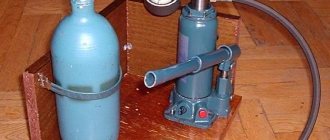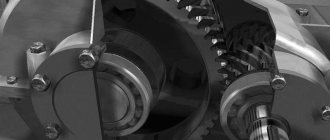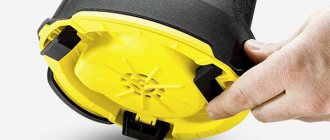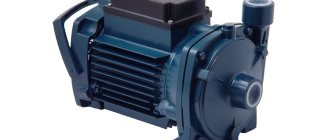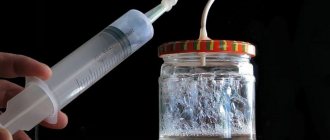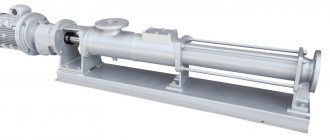SHARE ON SOCIAL NETWORKS
FacebookTwitterOkGoogle+PinterestVk
A water pump is a hydraulic device that sucks, pumps and moves liquid from one point to another. This occurs on the principle of transfer of kinetic or potential energy to the environment. Water units are presented in several varieties and differ in design, power, performance, efficiency, pressure and pressure.
Pumps for pumping water differ in power, design and performance
Pump for pumping water: characteristics of the unit
A water pump is a hydraulic unit that extracts, pumps and moves liquid horizontally or vertically. This occurs through the transformation of electrical energy into potential or kinetic energy. The internal structure of the unit depends on the method of energy conversion.
Pump performance is the volume of water that it can pump per unit of time.
Any autonomous or conventional electric water pump, regardless of the type of device, consists of a metal body, an impeller located on the shaft, seals, bearings, a guide device, an electric motor, a casing on it, suction and pressure pipes. The unit body is made of cast iron or steel. It has two holes. The bottom one is used for water intake, where the suction pipeline is connected through the inlet pipe, and the side one, where the pressure hose is fixed, is used for injection.
The main operating parameters of a mechanical water pump include power, pressure, and productivity. The first indicator directly determines the effective performance of the unit and indicates the amount of kW/h that the device will consume. The developed pressure determines the permissible distance over which liquid can be pumped. Here attention is paid to the length of the pressure pipeline.
The depth of liquid rise indicates from what level water can rise. The performance of the device determines the volume of water that the unit can pump per unit of time.
Gasoline pump
Pumps are a class of high-performance equipment that can be used to quickly transport gasoline and diesel fuel from tanks to cars, construction equipment and other devices. To operate, they require a 12 V or 24 V power source. The pump package usually includes:
- pump for pumping gasoline 24 V or 12 V without a cord;
- adapter for 2″ container.
Diesel fuel transfer pump 12V 50 DC12
This model is one of the most high-performance models for pumping fuel and has the following characteristics:
- Has a safety valve.
- Equipped with a mesh filter located in the intake line.
- Equipped with a built-in bypass valve.
- The main working elements are blades made of carbon steel and a rotor made of cast iron.
- Has thermal protection.
- There is a holder for a pistol.
- The operating cycle of the device provides for 30 minutes of continuous pumping of liquid and 30 minutes of break.
- It can suck up the pumped liquid from a depth of up to 7 m.
- A current of 20 A is required for operation.
- Supplied in a housing made of cast iron.
The 12V fuel transfer pump model is ideal for pumping various types of fuel: kerosene, gasoline and diesel fuel. The pump is supplied with a 4 m MBS hose and a gun with the ability to manually turn off the latter. If the consumer requires a different hose and dispensing gun, they will have to be purchased separately.
This model is not suitable for transporting fuel in large quantities. For these purposes, it is more advisable to purchase models ANSV-300, ANSV-1000, which will best cope with this task.
The need to pump fuel quite often arises in various areas. This may be required in industrial production or in households. But regardless of what specific object this operation was required to perform, it is necessary to have the most suitable unit available for this purpose. Most often, special pumps are used to pump fuel, which must meet certain requirements.
After all, if we are talking, for example, about an enterprise whose activities are related to oil refining, then a pump with a powerful engine that can easily cope with large volumes of fuel is best suited for it. In a similar way, you need to approach the selection of pumps for use at other facilities, paying attention first of all to the operating conditions of the purchased equipment.
Types of water pumps according to location and quality of pumped liquid
Depending on their location, pumps for pumping liquids can be surface or submersible. The first type is installed at a certain distance from the source, with which it communicates using a hose or pipeline. The power of the unit is determined by the value of this distance. The larger it is, the more powerful the unit is needed. Submersible models are mounted directly into a hydraulic structure. The body of the device must be completely or partially immersed in water.
Pumps for pumping water at location can be surface or submersible
Depending on the design of the working element, which affects the water flow, pumps can be divided into vane and vibration pumps.
Taking into account the degree of contamination of the pumped liquid, water supply pumps can be classified into three types. The first class is suitable for clean water, where the content of solid impurities does not exceed 150 g/m³. This category includes surface, borehole and well units.
The second type is capable of pumping medium-contaminated liquid with a solid particle content of no more than 200 g/m³. This group includes circulation, self-priming and fountain pumps. To pump highly dirty water containing more than 200 g/m³ of impurities, drainage and surface sewerage units are used.
Important! The correct choice of a pumping unit according to the criterion of liquid purity is the key to avoiding rapid wear of mechanical parts and equipment failure.
The housing of submersible pump models must be partially or completely placed in water
Power supply options for water pumping equipment
The pumping unit can be powered by electricity or liquid fuel. The first type of device uses alternating current to operate the engine, as a result of which it is completely dependent on the electrical network. Therefore, an electric water pump is selected if it is present. It is very important to take into account the network voltage, since a specific unit model is designed for a certain number of phases.
Liquid fuel pumps are equipped with an internal combustion engine. Such units are characterized by smaller dimensions, mobility and ease of operation, repair and maintenance.
There are two types of liquid fuel pumping units - gasoline and diesel. Gasoline pumps use a gasoline-oil mixture as fuel, which is prepared in a certain ratio of components. Such units are much quieter and have a lower cost. However, they consume quite a lot of fuel, as a result of which they are not very economical. Diesel units use diesel fuel as fuel. The pumps operate with a high noise level, but are characterized by high efficiency.
Important! Pumps for pumping 220 V water are more expensive than liquid fuel units.
Water pumps can be powered by electricity or liquid fuel
What is a 12 Volt water pump?
A special category of pumping equipment includes small 12 volt water pumps. They can be used for watering a vegetable garden, garden, pumping liquid from sources into reservoirs, for draining and flushing a well or well, washing a car, filling and draining artificial reservoirs, aquariums of various sizes.
The 12 volt water pump is no different from its large-sized counterpart. It consists of a housing, impeller and shaft made of stainless steel, a wet-type rotor, bronze elements of the hydraulic system, connecting fittings, and a mechanical cleaning filter, which protects the device from the ingress of large solid particles of debris larger than 0.5 mm.
The 12 volt pump is characterized by compact dimensions, ease of operation, energy independence, since the unit can operate not only from the mains, but also from a battery, resistance of the housing and structural elements to water ingress, absence of noise and vibration during work, and low cost.
Helpful advice! For home use, you can make such a pump for pumping water with your own hands.
12 Volt water pumps are characterized by compact size, energy independence and ease of operation
The productivity of the mini-pump is 15-25 l/min. The unit provides a liquid pressure of 20-40 mm of water. Art. The low-voltage pump can be operated at liquid temperatures from 10 to 80 degrees.
Types of pumps
- One of the most popular models are electric pumps, the operation of which is ensured by a built-in electric motor for pumping fuel. A fairly common example belonging to this category of pumping equipment is a 12-volt device, which is small in size and highly portable.
- The operation of a pneumatic fuel pump is based on the principle of using a flow of compressed air. It differs from electric versions in that its design does not use electronic components. To start such a unit, a special compressor is used.
- It is advisable to use manual models if it is necessary to pump fuel in the absence of a source of compressed air or electricity. This happens quite often on the road. These devices are very simply and securely attached to the neck of a tank containing fuel and allow you to quickly pump fuel.
Depending on the principle of operation, pumping equipment of this type can be divided into two types: volumetric and dynamic.
Displacement pumps for fuel transfer
Devices of this type are among the most popular, and they work by using pressure. In other words, they are able to independently absorb liquid, and it is thanks to this self-sufficiency that they are very popular today. These devices have high levels of tightness, maintained due to the difference in pressure in the pressure and suction pipelines.
The following types of positive displacement pumps are most often used to pump fuel:
- Piston . The functions of the working unit in these devices are performed by a piston that performs a reciprocating movement during operation. When this element is deviated to the side, the lower valve opens, which allows liquid to penetrate inside the installation. In the opposite case, when the piston takes its original position, a pumping effect is observed, and at this time the upper valve is connected to the operation, which is moved to the open position.
- Plunger . They are used to create high pressure. In their design, these devices look like piston pumps, with one exception. Instead of a piston, they use a long rod located in the housing, which moves freely inside it without coming into contact with its walls. The units have a seal, due to which the plunger can only move inside the device back and forth. The main advantage of such equipment is high reliability.
- Diaphragm . The main working unit here is a flexible plate with fixed edges. It has the functions of a piston, so when force is applied to it from the drive, it bends. Diaphragm pumps are characterized by ease of operation, simple design, compact size, low weight, high reliability and safety.
- Lamellar . Installations of this type are equipped with a special housing, which contains a rotor with slots where the plates are hidden. During rotation of the rotor, a certain pressure arises, which forces the plates to leave their places and press against the walls of the housing. Vane pumps are compact in size, have high efficiency, can operate in reverse mode, and can also be used as a hydraulic motor.
- Gear . The main working elements of such devices are the rotor and the displacer, which are made in the form of gears. To connect them together, gearing is used. These installations operate thanks to the continuous movement of the working elements, which forces the liquid to move into the recesses between the teeth, and from there, moving along the inner walls of the housing, to the injected cavity. Gear pumps have a simple design, compact size, long service life and high reliability.
- Screw . Pumps of this type are practically no different in design and operating principle from gear versions. The only difference between them is that the function of the working unit is performed by screw metal rotors, which are placed in a housing of a similar shape. Screw pumps are characterized by low noise levels, operate in self-priming mode, provide uniform fuel supply and high pressure.
Dynamic pumps
Equipment of this type works by using inertial force. Due to the complexity of the fuel pumping process, which is carried out in several stages, dynamic pumps are used when there is a need to process low-quality products. In other words, they are used to transport fuel containing foreign impurities.
An important advantage of dynamic devices is the ability to pump fuel in large quantities. At the same time, they have a high efficiency rate, which gives them superiority over similar volumetric devices.
The most common types of dynamic devices are:
- Lobed . The most popular type of dynamic type pumps. Their operation can be based on the axial or centrifugal principle. In models of the first type, pressure occurs due to the rotation of the wheels. They are used to increase pressure, demonstrating high efficiency. Axial type equipment has a device that resembles a fan. The main working element is the screw located inside the guide pipe. These installations do not allow the creation of high pressure, nor can they provide a high speed of pumping liquid.
- Friction . From the name of these devices it is easy to guess that their work is carried out through the use of friction. Of the models belonging to this category, the labyrinth pump is most often used. The main working elements are the rotor and the housing cage. These installations are actively used in the chemical field; they are used very rarely for pumping fuel.
- Vortex . In the design of these devices, the function of the working element is performed by a wheel with blades installed in a cylindrical body. Pumping of fuel is carried out thanks to an impeller, which transports water to a special hole and throws it out through it. Vortex pumps are self-priming, have a cheap and simple design, and provide high fuel supply pressure.
- Jet . The operation of this equipment is carried out through the use of kinetic energy, which is created by the working fluid and transferred to the pumped fuel.
Varieties of Low Voltage Small Water Pumps
Low-voltage pumps can be divided into several types: circulation pumps, vacuum pumps, diaphragm pumps and pump pumps. The last group includes submersible, surface and hand pumps for pumping water. They are used for pumping liquid from basements, cellars, cleaning wells and wells, and removing contaminated liquid from cesspools.
12 Volt water pumps can be used for autonomous water supply systems. Manual units are activated through certain physical efforts that a person must apply.
12 Volt vacuum pumps are used for pumping water from above-ground reservoirs and underground sources. They are characterized by high performance, low noise and vibration levels, low energy consumption, and the ability to operate in a wide temperature range.
Low voltage small water pumps are divided into circulation pumps, diaphragm pumps, vacuum pumps and water pumps.
Diaphragm pumps are used to take water from a well, pump it from one container to another, drain artificial reservoirs and wash equipment. The operating principle of such units is based on changing the total volume of working fluid. The membrane, used as the main working element, draws in water and pushes it out through the inlet pipes.
Characteristics of 12 Volt circulation water pumps
12 Volt circulation pumps are centrifugal-type units that are used in heating and hot water supply systems. The main task of such devices is to maintain the required pressure when the main pump fails or in the absence of a power supply network.
Circulation pumps are available in two varieties - with a dry or wet rotor. In the latter type of unit, the rotor is located in the liquid. The contacts are hidden in a special stainless steel compartment. This pump has small dimensions, is characterized by long-term uninterrupted operation, low noise level and ease of use. The main disadvantage is the low efficiency, which can be as low as 50%.
Mini water pumps with a dry rotor, in which the rotor is separated by ceramic or metal sealing rings, are characterized by higher efficiency. It can only pump clean water, otherwise the tightness of the mating rings may be broken. Such pumps are available in horizontal, vertical and block types.
12 Volt circulation water pumps are centrifugal-type devices that are used in the installation of hot water supply and heating systems
A special category is made up of high-pressure equipment that operates on 12 volts. It can be safely used to supply water to the heating system.
Equipment catalog
Vacuum pumpsVacuum pumps (VVN, AVZ, NVR, VNK-2, VE, Vi) Vacuum pumps with oil seal (for pressure tables, vacuum forming) Oil-free (dry) vacuum pumps Equipment for refilling air conditioners, accessories for vacuum pumps (Vacuum gauges, hoses and etc.) Blowers
Fuel pumps
Pumps for diesel fuel and gasoline Pumps for diesel fuel and oil for 12V and 24V Mini gas stations for diesel fuel, gasoline and oil Pumps for oil (NK)
Drum pumps
Hand pumps for drums Pumps for drums and containers, electric, pneumatic Chemical pumps for drums Finish Thompson Chemical pumps for drums FLUX
Hand pumps
Hand pumps for wells and containers (P 0.8/30, RPN 1.3/30, RK-2)
Pumps for a summer house, a country house
Domestic pumps
Pressure testing pumps
Pumps for pressure testing (GN-60, -200M, -500, NR-60, UGI-1, Kompakt-50, Kompakt-Electro, PNU-2, -3, NP-150)
High pressure pumps (100…1000 atm)
Pumps and high-pressure washers TNA, ENA (from 120 to 1000 atm)
Pumps for oils, greases, bitumen
Bitumen pumps (DS-125, DS-134, DZ-212) Gear pumps (NMSh, Sh, BG, Calpeda: IM 25/4) Vane (rotary vane) pumps Three-screw pumps (A13V) Twin-screw pumps Pneumatic oil pumps Pressol and Ampika Manual and pneumatic lubricant dispensing units Pressol and Ampika Equipment for collecting used oil Pressol Osediagonal (screw) pumps (UDN)
Electric pumps for wells and wells
Budget pumps for water from wells Electric well pumps Pedrollo (4SR, NKm) and Grundfos (SQ, SQE, SB, SBA) Pumps for artesian wells ECV Premium well pumps ZDS Submersible well pumps Ciris (Livgidromash)
Water pumps
Automatic pumping stations Automatic pumping stations with 2 or more pumps Low-capacity pumps Vortex pumps (VKS, Pedrollo: PK, PKs PQ, Calpeda: CA, T, TP) Cantilever water pumps (K, KM, Calpeda: NM) Centrifugal console Livgidromash (K, 1K, 2K, KM) Pedrollo water pumps (CP, 2CP, NGA) Pedrollo industrial pumps (HF, F) Stainless steel pumps (MXH, NGX, AL-RED 135m, Aspri, Tecnoself) Pumps for swimming pools and hydromassage baths (Calpeda: Mpc, Spa. ESPA: Piscis, Tiper, Nadorself, Niper, Iris, Silen) Vertical multi-section pumps (TSNSG-AM, MXV, MK, Multi, TsNSv) Vertical pumps Boosta Multi-section horizontal pumps (TSNSG, Plurijet) Multistage vertical pumps GRUNDFOS (CR) Horizontal pumping units (D) Double-entry pumps with a horizontal housing split of the DeLium series Feed for boilers (AN 2/16, NG 1.6/1.6, TsVK, PQ 3000) Condensate (Ks) Centrifugal monoblock pumps SAER Pumps KORDIS Automatic pumping stations APD (on BOOSTA pumps)
Pumps for in-line heating systems
Circulation in line KML, TsNL, TsVTs-T 6.3-3.5 Pumps for circulation in heating systems (NC, NCD, NR, UPS, UPSD, Alpha)
Mortar pumps (SO)
Mortar pumps (SO-49M, VNP, UVN)
Equipment at a discount
Equipment at a discount
Water Spray Systems
Spray systems
Types of water pumps according to operating principle
Vane units act on the pumped liquid through a special wheel. There are blades on it that are directed in the opposite direction relative to the movement of water. As a result of the transfer of torque to the wheel shaft from the engine shaft, centrifugal force arises between the blades. Liquid from the functional chamber begins to be forced out, entering the pressure pipe under high pressure.
The vane pump can be a single- or multi-stage unit. The first option is equipped with one rotation wheel, and the second - several.
Depending on the impeller configuration, vane units can be centrifugal, vortex or self-priming.
Vane pump design: 1 – guide vane; 2 – shoulder blades; 3 – impeller; 4 – interscapular channels
The vibration pump for pumping water from a container of any size and type is equipped with a functional reservoir separated by a plate membrane. On one side there is a cavity filled with liquid, and on the other there is a vibrator that sets the thin membrane in motion. The membrane alternately bends in different directions, changing the functional volume of the cavity and the internal pressure in it.
As the pressure decreases, a vacuum occurs, which causes the intake valve to open. At this time, water from the suction pipe moves freely into the cavity of the unit. When the membrane bending position changes to the opposite direction, the pressure increases, intensely pushing water out through the valve.
Important! Vibrating pumps, in comparison with vane versions, are capable of raising liquid to a greater height.
In terms of efficiency, vibration pumps are inferior to vane units. They fail faster. In addition, they are characterized by a high degree of vibration. However, they have a lower cost, and repairing the unit will not require large expenses.
Vibrating submersible pumps are capable of lifting water to great heights
Device design
A manual pump for pumping fuel consists of a system of levers, exhaust and inlet valves, a liquid container and pipelines. Mechanical units are equipped with a pressure hose connecting the hose to the pump. The kit also includes a mounting adapter and a telescopic tube (select models only).
The most common type of manual fuel pump is a piston pump. The principle of its operation is quite simple. The operator lifts the piston and thereby allows fuel to leak into the reservoir. Then he lowers the lever, pressure is created and the liquid is pushed out through the outlet.
Even after prolonged work, the operator will still not be overly tired. The fact is that manual fuel devices are designed in such a way as to obtain maximum results with a minimum of effort.
Typically mechanical units are made of stainless steel. The hand pump housing is resistant to fire and explosion. Therefore, it is possible to pump not only fuel, but also alcohols, solvents and even acids.
Characteristics of surface water pumps
A surface dimensional or mini pump is designed to draw liquid from a source that is located at some distance from the device. Such units can also be used for pumping water from pits and basements when performing construction or repair work. They are often used for watering a summer cottage, for an irrigation system, or for increasing pressure in a centralized water supply network.
The surface unit can be located in the basement, which should be dry and warm, in a separate extension or in a caisson near the well head. Its bottom should be located 0.5 m below the soil freezing level.
Related article:
Fountain pump: the heart of an artificial water source
Operating principle and purpose of the device. Types of units. Criterias of choice. Manufacturers. Installation. DIY pump.
Surface pumps are capable of lifting water to a height of 7-8 m, which depends on the design of the unit. They are characterized by high power and performance. Surface pumps are small in size, making them easy to operate. They are distinguished by their mobility and low cost. Surface equipment can pump water from a shallow source. It is more durable due to the fact that the metal structure does not come into contact with water.
A mini-pump for pumping 220 Volt water can be supplemented with automation, which will allow it to work in autonomous mode. In order for the unit to be able to lift water from a considerable depth, the pump is equipped with a remote ejector.
The surface pump for pumping water must be located at some distance from the source
Disadvantages include the formation of a high noise level during operation, a small immersion depth and high sensitivity to pumping contaminated liquid, which will lead to rapid wear of the internal mechanism of the unit.
Important! Some models of surface pumps require filling the line with water to start operating the unit.
Scope of application
Everyone understands that devices used for pumping water from a well can immediately be excluded from the list of candidates for pumping gasoline or diesel fuel. For this purpose it is necessary to use a special device. Equipment of this type has a wide range of applications. It can be used in domestic conditions when it is necessary to pour fuel into cans and use it as needed in the required quantities.
Sometimes it becomes necessary to transfer fuel for storage into barrels and other containers, which can only be done quickly and safely using a special pump . Therefore, every owner who has a car at his disposal must ensure that his private home, country house or garage has such a pump
Such devices are actively used at gas stations, but here you can most often find models with high power and stationary performance.
It is also useful to have this equipment in workshops where it is often necessary to pump fuel from equipment received for repair. There are many other objects where such pumps can be used - industrial enterprises, airfields, ports and docks, car depots, etc.
Regardless of the specific area in which you are going to use this equipment, in any case, before purchasing, you need to carefully familiarize yourself with the presented models and their inherent technical characteristics.
Characteristics of vortex and centrifugal pumps for pumping water
Based on the method of transporting liquid, surface pumps are divided into vortex and centrifugal pumps. In the first type of unit, the impeller blades have a special shape. They have a rectilinear configuration, due to which the liquid rotates between them in a characteristic manner, which allows for a powerful vortex flow directed into one channel.
This is ensured by the fact that each blade section gives the water additional acceleration. As a result, such a pump produces high pressure, which is 5 times higher than this parameter of a centrifugal pump.
Due to their simple design, vortex pumps are easy to operate and maintain.
Vortex pumps are compact in size and low cost. Due to the simplicity of the design, the unit is easy to operate, repair and maintain. The immersion depth of the suction hose is 8 m. However, such small pumps are characterized by low efficiency and pump only clean water.
Important! A vortex surface pump can operate in two directions, including in reverse mode.
Vortex pumps are equipped with a closed or open impeller. In the first case, the blades are made in the form of cells, which are closed at the ends with blades. The design of the open impeller has no restrictions.
Centrifugal pumps have an impeller structure in which the blades help disperse water over all the walls of the inner chamber. The increase in pressure is achieved due to centrifugal force. The pumps are afraid of air getting inside, so they are additionally equipped with an ejector, which pumps air out of the pump before starting and during operation.
Due to low wear of internal mechanisms, the centrifugal pump has a long service life
Such units are characterized by large dimensions, low noise operation, and high efficiency. The immersion depth of the suction hose is 10-13 m. The internal mechanism is less subject to wear than that of vortex units, due to which the centrifugal pump has a longer service life.
A powerful water pump provides stable pressure and pressure in the network, and it is possible to adjust these parameters. The cost of the equipment is much higher than the price of vortex analogues. Therefore, it is advisable to use them when arranging an autonomous water supply system. Surface pumps can be self-priming or fountain type.
Nuances of choice
Before you go shopping for pumping equipment, we recommend that you familiarize yourself with the following recommendations to help you make the right choice:
- If you are faced with the task of transporting fuel over a distance of more than 30 m, then you will need several pumps, which should be placed in a line.
- To create high pressure, we recommend purchasing centrifugal-type pumping equipment.
- It makes sense to purchase axial pumps only if you are going to pump fuel in large volumes and the pressure force is not important to you, which in these installations is at a fairly low level.
- The most popular option among consumers are jet pumps, which are chosen primarily due to the absence of moving elements in their design.
- Vortex pumps are indispensable if you are looking for a lightweight, compact, inexpensive and easy to operate unit.
- Volumetric pumps are ideal for pumping fuel without foreign inclusions. They will allow you to save not only a lot of time, but also energy.
Self-priming and fountain surface pumps
Self-priming pumping units are characterized by compactness, simplicity of design, ease of operation and low maintenance. The equipment is used for watering gardens, providing water supply to a private home, and lifting water from clean surface sources.
Such pumps can be ejector or non-ejector. The first option involves raising water by pumping a vacuum into the ejector, which ensures high pressure. The ejector is installed on the suction hose and lowered into the water. During suction, part of the liquid is returned to the ejector, which increases the inlet pressure. The big disadvantage of this design is that the efficiency decreases as the ejector deepens, and energy consumption increases.
Self-priming pumps are compact, simple in design and easy to operate.
Helpful advice! You can also use such an electric ejector pump to pump water from a barrel and drain pools.
The ejectorless device sucks in liquid due to the specific design of the hydraulic equipment. Such pumps are capable of raising water to a height of no more than 9 m.
To increase pressure in a centralized water supply or heating network, there is a special type of surface equipment called a circulation pump. It is installed directly on the pipeline of the water supply system or mounted in front of the boiler when installing a heating network. A circulation pump is also used for watering land.
Another type of surface pumping equipment is a fountain unit. It is widely used in landscape design. Such units are installed when arranging decorative ponds, fountains, mini-ponds, streams, and cascading waterfalls. Pumping equipment can also be used to irrigate individual areas that are located close to each other.
Some models of fountain pumps are equipped with a liquid filtration function, this allows you to pump sea water
To service large-scale objects and create massive water compositions, there is a high-power water compressor. For small reservoirs and fountain ensembles, low-power units are installed.
Important! Among fountain-type pumps, there are models equipped with a liquid filtration function, thanks to which they can pump sea water.
For such pumps, special shaped nozzles are produced that contribute to the formation of beautiful fountain jets. Fountain units can be installed at the bottom of a reservoir or mounted outside the source.
Features of submersible pumps for pumping water
Submersible pumps 12 Volt or 220 V are installed directly into the source for collecting liquid. In this case, the engine can be submerged in water or located above its surface. This type of pumping equipment is capable of pumping out liquid from a considerable depth. The unit has high performance and is characterized by effective engine cooling.
Deep pumps for wells and drainage and fecal devices
Submersible pumps, based on the purpose of the unit, are divided into the following groups: drainage, well, borehole and fecal.
Well pumps are used to pump water from wells and mines. They are distinguished by their significant dimensions, shallow immersion depth, high power, and silent operation without vibration. The units can work with liquids that contain sand, silt or clay.
Borehole pumps are characterized by compact dimensions, elongated shape, and are installed directly in the well. Water can be taken from very great depths. Such units are characterized by high power and productivity. They can be used for clean or slightly contaminated water.
Drainage units are used to collect lightly contaminated or dirty water containing sand, clay, grass and small debris from basements, pits, trenches.
Fecal pumps can work with liquid containing large solid particles with a diameter of up to 35 mm
Important! There are submersible drainage models equipped with knives for grinding impurities.
Fecal pumps for pumping wastewater are similar to drainage pumps. Such units can work with heavily polluted waters that contain large solid particles with a diameter of about 35 mm. Some designs feature a powerful stainless steel or cast iron cutting mechanism to shred larger debris. Such pumps are used to pump waste and fecal water into a special septic tank.
Important! Sewage pumps come in both submersible and surface types.
The fecal pump for pumping dirty water is characterized by resistance to aggressive environments. The device is additionally equipped with special floats, which, if it is necessary to stop the operation of the device, give signals.
Drainage pumps are used to remove dirty water containing clay, sand, grass and small debris.
Advantages of hand-held devices
A mechanical fuel pump should not be compared with other types of equipment. It is intended for household tasks, but not for industrial ones. But still, a manual unit also has its advantages:
- simplicity. Almost every detail is immovable. All elements are made of durable stainless steel. Thus, manufacturers have reduced the risk of breakdown to a minimum;
- compactness. A manual fuel pump does not take up much space. It can always be moved close to the container, wherever it is;
- performance. Of course, it cannot be compared with electric models. But for domestic needs and for force majeure, fuel hand pumps are quite suitable;
- versatility. Using a mechanical device, you can pump any type of fuel: gasoline, diesel fuel and other petroleum products;
- stability. Fuel hand pumps can be used at any time of the year. No breakdowns or freezing - an excellent solution for owners of diesel vehicles.
These arguments once again confirm that a hand pump is an indispensable thing in the household.
Characteristic features of aquarium pumps
An aquarium pump, also known as a compressor, aerator or pump, is designed to circulate water in a tank in order to saturate it with oxygen for the normal functioning of its inhabitants. Aeration is performed around the clock, ensuring a stable air exchange regime. Such pumps are used to mix the upper and lower layers of water in order to equalize the temperature of the liquid, thereby preventing its changes. The operation of the device helps to destroy the oily, unpleasant film that interferes with normal gas exchange.
The operation of an aquarium pump for pumping water is as follows. There is a motor inside the compressor. It takes oxygen from the room and forces it into a tube, pumping it to the sprayer, which is located in the aquarium.
The pump can operate on mains power or independently on batteries. There are one- and two-channel models. The latter option is characterized by durability, small size, low noise and high performance.
Based on their design components, aquarium pump pumps come in vibration and diaphragm types. The first type is characterized by high power and durability. The equipment operates quite noisily, creating vibrations. It is recommended to install a piston unit for aquariums with a capacity of more than 200 liters.
An aquarium pump is used to circulate water in a tank to saturate it with oxygen.
The diaphragm pump makes virtually no noise and has low power consumption. However, such a unit is characterized by poor performance, so it is advisable to use it for aquariums with a capacity of up to 150 liters.
Depending on the installation option, there are surface and submersible 12 Volt water pumps for an aquarium. The first type is attached using special suction cups or clamps under water to the bottom of the aquarium. The surface version is installed outside the fish tank. Only air tubes are supplied to it.
Important! A surface aquarium pump is used for small tanks when keeping particularly demanding fish.
